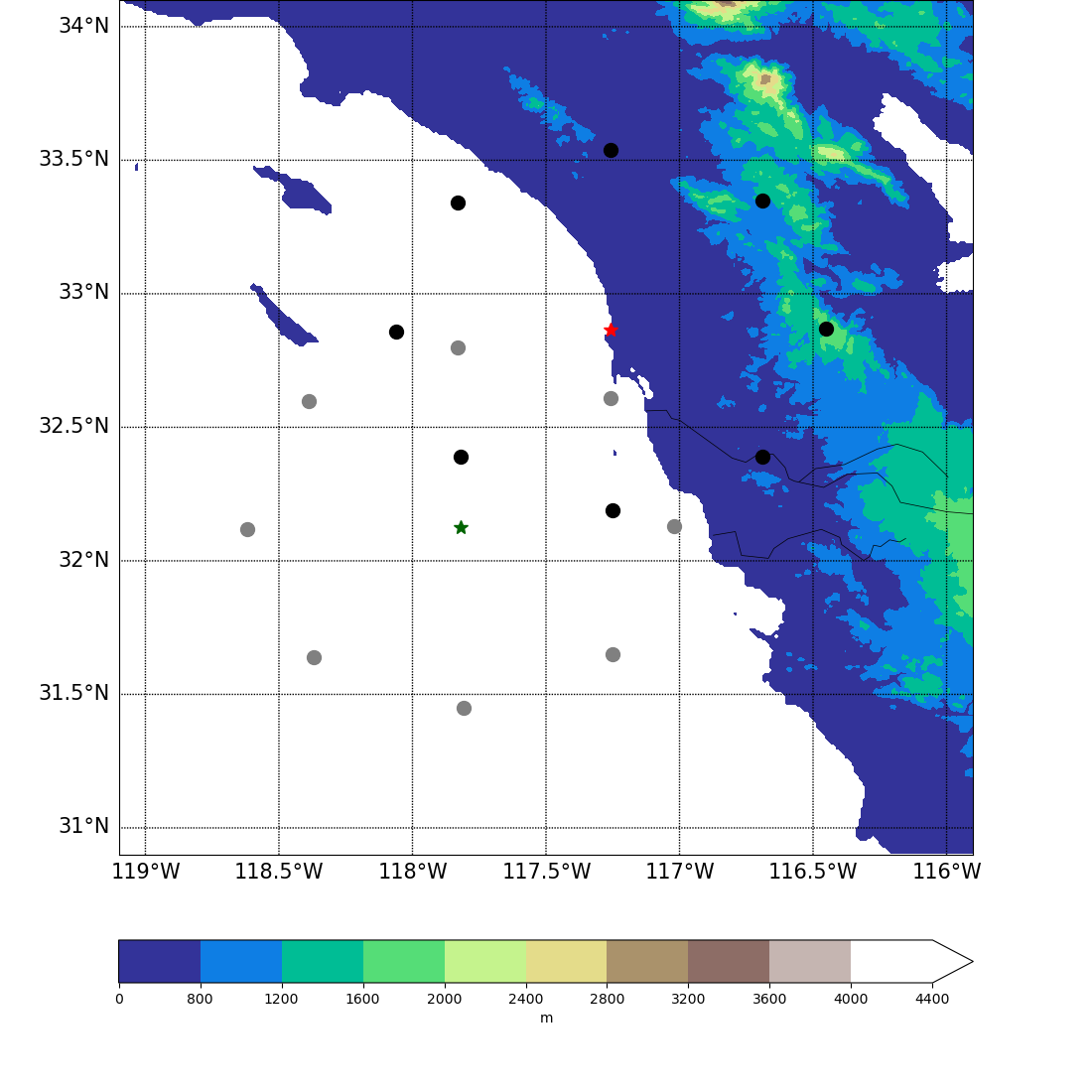Large-Scale Forcing Data Released for EPCAPE Campaign
Published: 1 April 2025

Continuous large-scale forcing data are now available for the Eastern Pacific Cloud Aerosol Precipitation Experiment (EPCAPE), conducted by the Atmospheric Radiation Measurement (ARM) User Facility from mid-February 2023 through mid-February 2024 in La Jolla, California.
Forcing data for EPCAPE were developed from a constrained variational analysis approach documented in Zhang and Lin (1997) and Zhang et al. (2001). Scientists can use this value-added product (VAP), known as VARANAL, to drive single-column models, cloud-resolving models, and large-eddy simulation models for different cloud and convective systems. To help validate model simulations, the VAP includes diagnostic fields such as diabatic heating profiles, cloud fields, surface measurements, and large-scale conditions.
Two evaluation versions of VARANAL are available for EPCAPE from March 1, 2023, through January 31, 2024. Both versions were developed based on European Centre for Medium-Range Weather Forecasts (ECMWF) Reanalysis version 5 (ERA5) data.
The standard version of VARANAL for EPCAPE was derived using a pressure coordinate algorithm and assuming a flat surface to allow for easy defining of the model surface. The variational analysis domain for the standard version represents ocean only to exclude the impact of different surface types on the observed surface radiative and turbulent heat fluxes. The domain is centered at 117.82oW, 32.13oN with a radius of 75 kilometers.
The other version of VARANAL for EPCAPE, which has a variational analysis domain covering both ocean and land, was derived by applying a terrain-following sigma coordinate algorithm. This algorithm was designed to better treat the varying slope of the terrain in the analysis so that the effect of the surface terrain on the derived large-scale forcing fields can be captured and represented (Tang et al. 2020). The analysis domain for the sigma version is centered at the ARM Mobile Facility site on the Ellen Browning Scripps Memorial Pier (117.26oW, 32.87oN) with a radius of 75 kilometers.
Each data set represents an average over its analysis domain, so users need to be cautious when comparing the forcing data with ARM single-point measurements.
Both data sets are in netCDF format, with a time resolution of 60 minutes and a vertical resolution of 25 hPa.
Scientists can begin using the EPCAPE large-scale variational analysis forcing data for model simulation and evaluation.
More information about VARANAL can be found on the VAP web page. Additional details about ARM continuous forcing data are in Xie et al. (2004).
To ask questions, report data issues, or provide feedback on the new EPCAPE VARANAL evaluation data, please contact ARM VAP developer Cheng Tao or ARM translator Shaocheng Xie.
Access the data sets in the ARM Data Center. (To download the data, first create an ARM account.)
To cite the standard VARANAL data, please use doi:10.5439/1860369. The sigma data can be referenced as doi:10.5439/1961987.
References:
Zhang M and J Lin. 1997. “Constrained Variational Analysis of Sounding Data Based on Column-Integrated Budgets of Mass, Heat, Moisture, and Momentum: Approach and Application to ARM Measurements.” Journal of the Atmospheric Sciences, 54(11), 1503-1524, https://doi.org/10.1175/1520-0469(1997)054%3C1503:CVAOSD%3E2.0.CO;2
Zhang M, J Lin, RT Cederwall, JJ Yio, and SC Xie. 2001. “Objective Analysis of ARM IOP Data: Method and Sensitivity.” Monthly Weather Review, 129(2), 295-311, https://doi.org/10.1175/1520-0493(2001)129%3C0295:OAOAID%3E2.0.CO;2
Xie S, RT Cederwall, and MH Zhang. 2004. “Developing long-term single-column model/cloud system–resolving model forcing data using numerical weather prediction products constrained by surface and top of the atmosphere observations.” Journal of Geophysical Research: Atmospheres, 109(D1), D01104, https://doi.org/10.1029/2003JD004045
Tang S, S Xie, M Zhang, and S Endo. 2020. “Improvement of Atmospheric Objective Analysis Over Sloping Terrain and Its Impact on Shallow-Cumulus Clouds in Large-Eddy Simulations.” Journal of Geophysical Research: Atmospheres, 125(13), e2020JD032492, https://doi.org/10.1029/2020JD032492
Keep up with the Atmospheric Observer
Updates on ARM news, events, and opportunities delivered to your inbox
ARM User Profile
ARM welcomes users from all institutions and nations. A free ARM user account is needed to access ARM data.


















